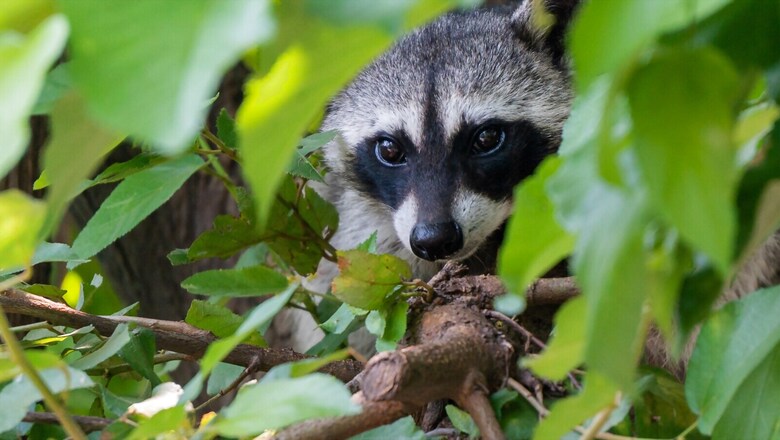
views
“As custodians of the planet, it is our responsibility to deal with all species with kindness, love, and compassion. That these animals suffer through human cruelty is beyond understanding. Please help to stop this madness.”— Richard Gere
Time and again, we forget that our planet is not just inhabited by human beings; it belongs to a diverse range of ecosystems as well, each of which is dependent on the other for survival and sustenance. However, irresponsible and insensitive human actions have spiralled out of control, making the concept of ‘man-environment coexistence’ nearly obscure.
Our wildlife and birds are an indispensable part of nature as they play a crucial role in environment protection and human well-being. All the creatures in an ecosystem co-exist so that a healthy ecological balance can be maintained in nature. Some species aid in extraction of nutrients from the cycle, while others hasten decomposition and the carbon and nitrogen cycles.
World Animal Day is recognized to emphasize the importance of conservation activities for animals and birds. This day also draws our attention to the impact created by individuals and corporations on animals and their habitats.
Our forests are home to a diverse range of species, from shade-loving plants and peculiar fungi to birds, animals, and unheard-of insects. Biodiversity has declined tremendously across the world. Ecosystems that have evolved over millions of years have been compromised because of human activities, and the ecosystems that remain continue to be threatened by the looming fear of pollution and climate change.
ALSO READ | This Woman in Raipur Rescues Snakes, Fights Venom of Sexism with Deadpan Humour
Every year, a large part of our forest land is desecrated to suit the demands of a rapidly growing urban population. Landscapes that are rich in wildlife are also becoming fragmented. Previously, animals could migrate between habitat regions; however, they are now obstructed by highways, agricultural land, and other infrastructure developments. A decline in our wildlife population will lead to a loss of essential pollinators as well, which can have a severe impact on food chains and the production of food.
Forests, which store carbon as biomass, have the most important role in reducing biodiversity loss, caused by human interventions, and fighting climate change. Trees provide shelter and habitat to 80 per cent of the world’s terrestrial biodiversity. A single tree can be the habitat of hundreds of fungi, insects, moss, mammals etc. For instance, while middle-aged forests because of the growth of ground flora are preferred by animals like salamanders and frogs, old forests with a dense understory of vegetation provide habitat to an array of animals, including bats, squirrels and many birds.
It is reasonable to assume that the abundance of wildlife and birds we take delight in would have no place to call home if forests are fragmented and deforestation practices are encouraged. Many plants and animals rely on a tree as it grows from a seedling to a snag, ready to decay into the soil. Animals depend on trees for food, shelter, nesting, perching, reproduction, storage, and even hunting and capturing prey. When trees mature, they provide fruits that can be used by birds and animals for consumption.
In addition, animals resort to trees for shade and shelter as they will be close to their food source during periods of extreme heat or rainfall. Snags are used by birds, small animals and other species for nesting, nursing, storing, foraging, roosting and perching. Decaying logs retain moisture and nutrients that help in the development and nourishment of new plants and support soil organisms such as earthworms, beetles, and insects.
The diversity and wealth of flowering plants have also contributed to the diversity and abundance of many other species. Humans rely on these flowering plants not only for their endearing colours and fragrances but also for the multitude of creatures they sustain. Flowers provide nectar to both bats and birds. Grazers can benefit from the chemical complexity present in flower petals by feeding on them. The rest of the blooming plant is typically edible as well. Flowering grasses have grazeable leaves, their fruits are sweet and tasty to many herbivores and omnivores, and the roots provide food for burrowing animals.
Conversations around planting trees for human health and wellness have increased. The indispensable role of trees in purifying air, preventing soil erosion, combating climate change and reducing the greenhouse effect has been repeatedly emphasized. As people become more aware of the many advantages of trees, it is also critical to focus more efforts towards planting and preserving trees for birds and animals. Man-animal conflicts are the outcome of loss of natural habitats and fragmented ecosystems. People have encroached upon vast expanses of greenery that were formerly home to birds, animals, and insects, displacing a huge number of species from their natural habitats.
We can’t blame wildlife for a rise in man-animal conflicts. We must understand that our insensitivity to their homes drove them to seek refuge in human settlements. To address these issues and conserve our wildlife while creating employment for rural and tribal populations, Grow-Trees.com, for instance, has started plantation campaigns in 23 Indian states. So far, more than 9 million saplings have been planted.
The co-existence of man and nature is one of the most beautiful things on our planet, and the world will be a better place to live in, the sooner we realize this.
The author holds a Masters in Environmental Science. She currently works with Grow-Trees.com where she is leading several innovative tree plantation initiatives. The views expressed in this article are those of the author and do not represent the stand of this publication.
















Comments
0 comment